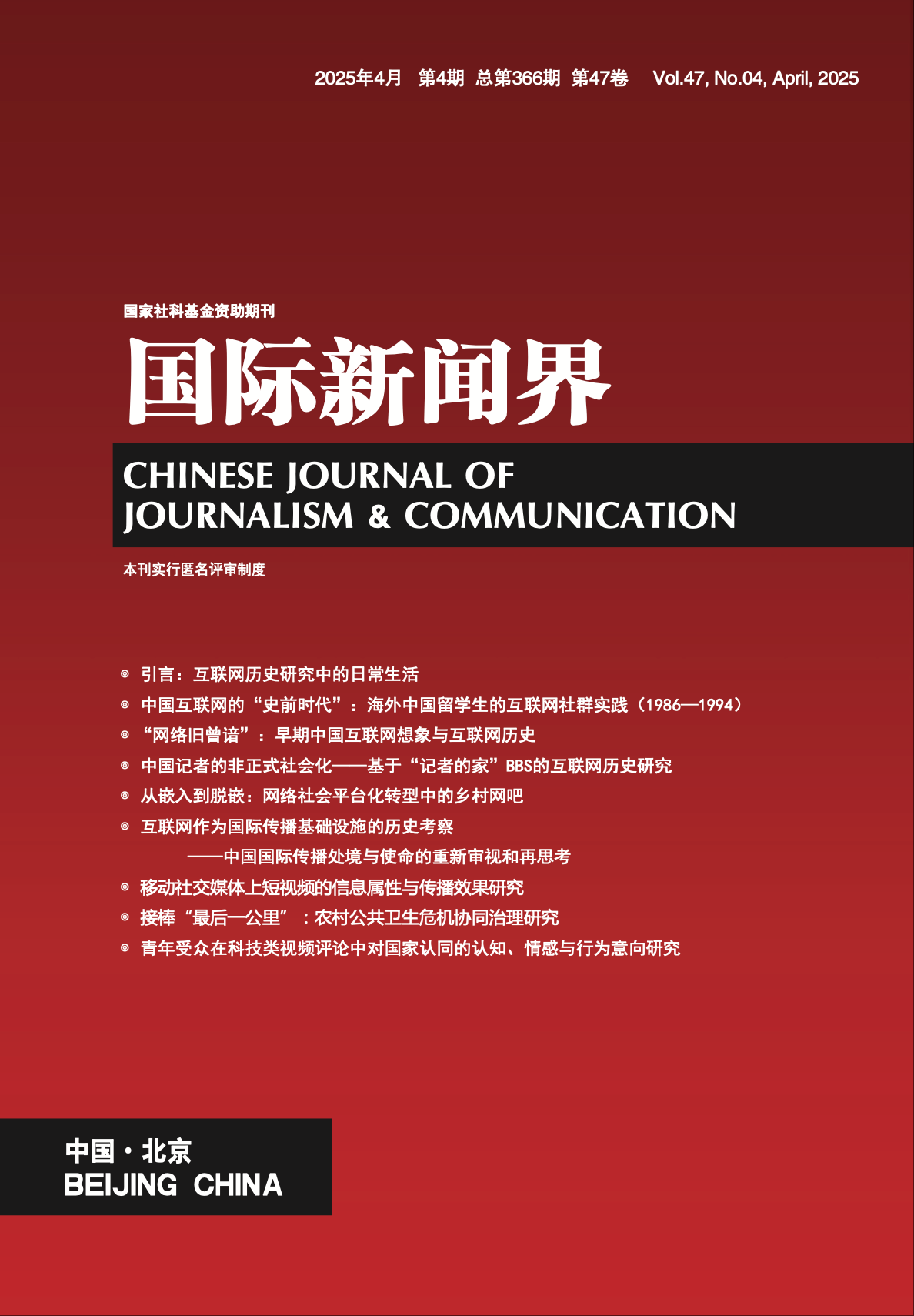WU Shiwen YANG Xiaoya
2025, 47(4): 37-61.
Imaginary serves as a crucial tool for understanding the early internet, reflecting the
intertwined relationship between the internet and society. It provides a valuable pathway for
exploring the early stages of internet development. Adopting a “long duration” analytical
perspective and drawing upon the framework of sociotechnical imaginaries, this study
integrates language, rhetoric, and action to investigate public and memory discourses about
early Chinese internet imaginaries (1984–1999). The findings reveal that early internet
imaginaries, as assemblages of materiality, meaning, and normativity, unfold across
technological, value, and social dimensions, centering on connecting the world, realizing
national revival, and reconfiguring daily life. These imaginaries exhibit characteristics of
macro-level comprehensiveness, strong technological optimism, and pronounced pragmatism.
Within the narratives of “catching up” and “revival,” the internet, as embedded in Chinese
society, was envisioned as a means for underdeveloped regions to leapfrog in development,
reflecting its unique socio-cultural significance in modern China. Significantly, 1995 emerges
as a pivotal exploratory node in this “long duration,” marking the transition of the internet
from an abstract concept to practical implementation. This period witnessed profound changes
across technical infrastructure, policy support, commercialization, and social applications, with
imaginaries shifting from elite-driven narratives to broader public participation, and themes
extending from macro-level visions to everyday experiences. Internet imaginaries serve as an
analytical lens, offering insights into the evolving perceptions of the internet in Chinese society and presenting a promising avenue for studying the social history of the internet in China.
